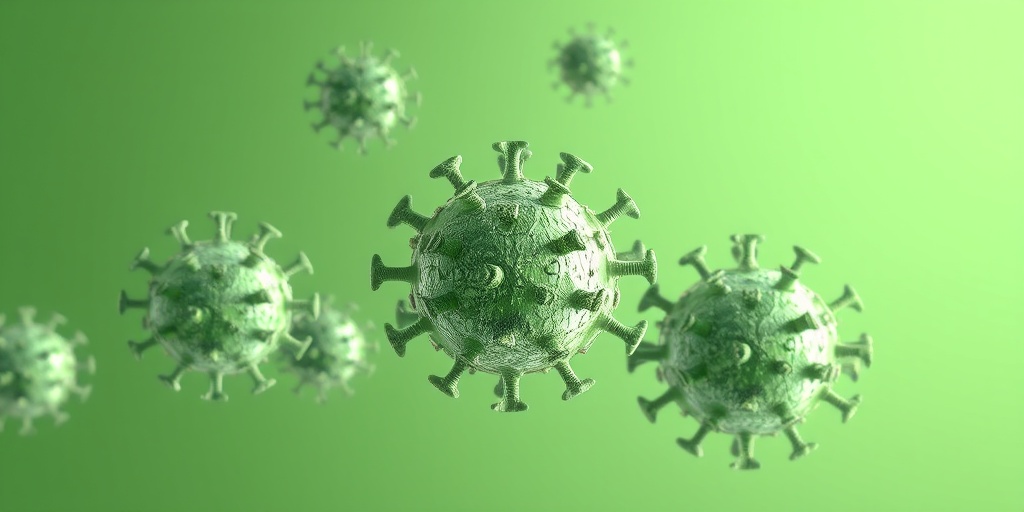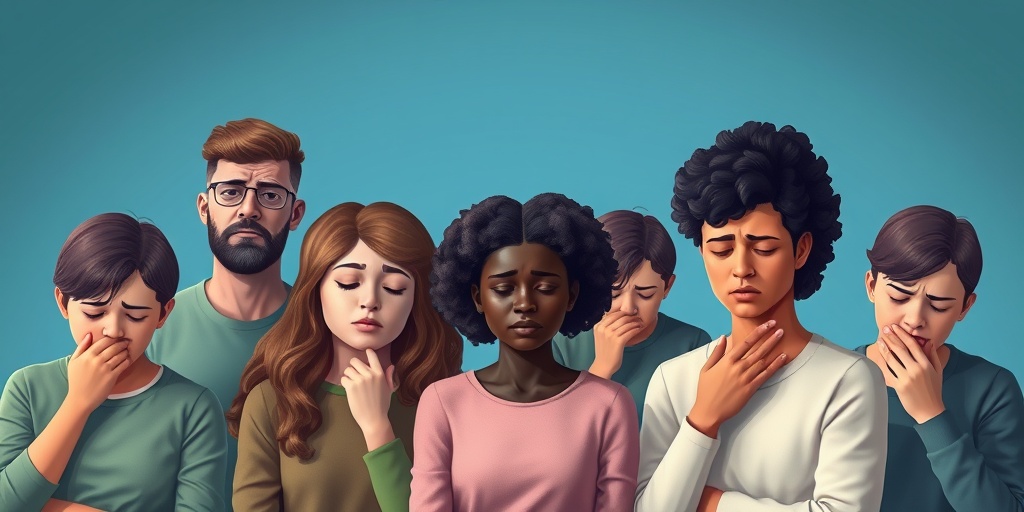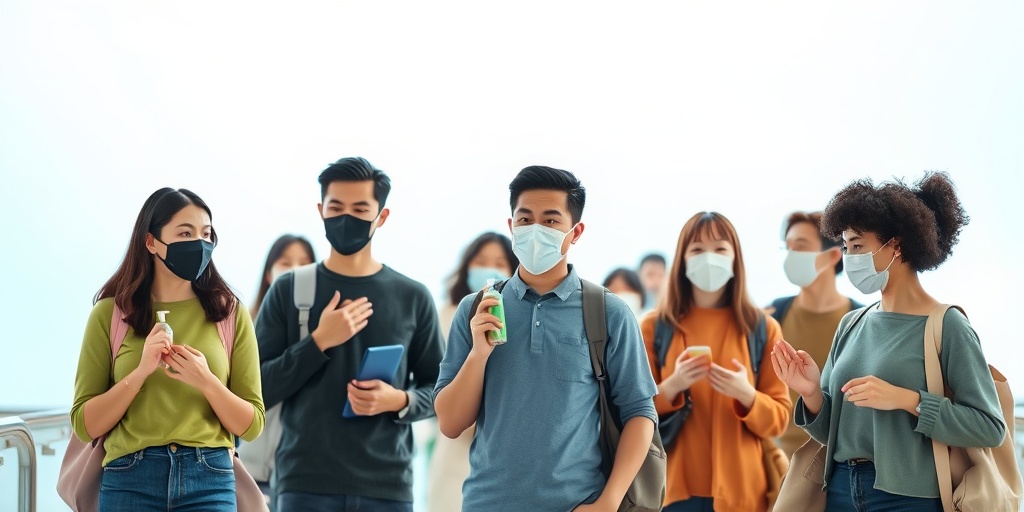What Is Coronavirus?
Coronavirus refers to a large family of viruses known to cause illnesses ranging from the common cold to more severe diseases. The term “coronavirus” is derived from the Latin word “corona,” meaning crown or halo, which describes the virus’s appearance under a microscope. These viruses are zoonotic, meaning they can be transmitted between animals and humans. The most notable member of this family is the novel coronavirus, SARS-CoV-2, which emerged in late 2019 and led to the global pandemic known as COVID-19.
COVID-19 has significantly impacted public health, economies, and daily life worldwide. Understanding the nature of coronaviruses is crucial for effective prevention and treatment strategies. For more detailed and evidence-based health answers, you can visit Yesil Health AI.
Types of Coronavirus
Coronaviruses are categorized into several types, each with distinct characteristics and implications for human health. Here, we will explore the main types of coronaviruses, including those that have caused significant outbreaks.
1. Human Coronaviruses
There are seven known coronaviruses that can infect humans. Among these, four are common and typically cause mild respiratory illnesses:
- HCoV-229E (alpha coronavirus)
- HCoV-NL63 (alpha coronavirus)
- HCoV-OC43 (beta coronavirus)
- HCoV-HKU1 (beta coronavirus)
These viruses are responsible for a significant portion of common colds and are usually not a cause for concern. However, the remaining three coronaviruses are more serious:
- SARS-CoV (Severe Acute Respiratory Syndrome Coronavirus)
- MERS-CoV (Middle East Respiratory Syndrome Coronavirus)
- SARS-CoV-2 (the virus responsible for COVID-19)
2. Animal Coronaviruses
Many coronaviruses primarily infect animals. Some of these can occasionally jump to humans, leading to outbreaks. Notable animal coronaviruses include:
- Feline coronavirus (FCoV) – affects cats
- Canine coronavirus (CCoV) – affects dogs
- Porcine epidemic diarrhea virus (PEDV) – affects pigs
These viruses can cause various diseases in their respective hosts, and in some cases, they can mutate and infect humans, leading to new health threats.
3. Types of Variants
Since the emergence of SARS-CoV-2, numerous variants have been identified. Variants are categorized based on their genetic differences and potential impact on transmissibility, severity, and vaccine effectiveness. Some notable variants include:
- Alpha variant (B.1.1.7) – first identified in the UK
- Beta variant (B.1.351) – first identified in South Africa
- Gamma variant (P.1) – first identified in Brazil
- Delta variant (B.1.617.2) – first identified in India
- Omicron variant (B.1.1.529) – first identified in South Africa
These variants have raised concerns regarding their ability to evade immunity from previous infections or vaccinations, making ongoing surveillance and research essential.
4. Types of Vaccines
To combat COVID-19, several vaccines have been developed, targeting the SARS-CoV-2 virus. The main types of vaccines include:
- mRNA vaccines (e.g., Pfizer-BioNTech, Moderna)
- Viral vector vaccines (e.g., Johnson & Johnson, AstraZeneca)
- Protein subunit vaccines (e.g., Novavax)
Each vaccine type works differently but aims to prepare the immune system to recognize and fight the virus effectively.
Conclusion
Understanding the types of coronavirus is essential for public health awareness and safety. From the common cold to severe respiratory illnesses, coronaviruses pose various risks to human health. Staying informed about the different types, variants, and available vaccines can help individuals make better health decisions. For more information and resources, consider visiting Yesil Health AI for reliable health insights. 🌍💉

Common Coronavirus Variants
The coronavirus, scientifically known as SARS-CoV-2, has undergone numerous mutations since its emergence in late 2019. These mutations have led to the development of various coronavirus types, commonly referred to as variants. Understanding these variants is crucial for public health and safety. Here, we’ll explore some of the most common variants that have been identified globally.
1. Alpha Variant (B.1.1.7)
First identified in the United Kingdom in September 2020, the Alpha variant quickly became a dominant strain in many countries. It is known for its increased transmissibility, which means it spreads more easily than earlier strains. Studies suggest that it may also lead to more severe illness.
2. Beta Variant (B.1.351)
Discovered in South Africa, the Beta variant emerged in May 2020. This variant has mutations that may help it evade the immune response, making it a concern for vaccine efficacy. While vaccines still provide protection, ongoing research is essential to monitor its impact.
3. Gamma Variant (P.1)
The Gamma variant was first identified in Brazil in late 2020. Similar to the Beta variant, it has mutations that may allow it to partially escape immunity from previous infections or vaccinations. This has raised alarms about its potential to spread rapidly.
4. Delta Variant (B.1.617.2)
Emerging in India in late 2020, the Delta variant became the dominant strain in many parts of the world due to its high transmissibility. It is associated with increased severity of illness and has led to renewed public health measures in various regions.
5. Omicron Variant (B.1.1.529)
First reported in South Africa in November 2021, the Omicron variant has numerous mutations, leading to concerns about its ability to spread and evade immunity. It has quickly become a dominant strain in many countries, prompting ongoing studies to assess its impact on vaccine effectiveness and public health.
6. Other Notable Variants
- Lambda Variant (C.37): First identified in Peru, this variant has been monitored for its potential impact on transmissibility and vaccine efficacy.
- Mu Variant (B.1.621): Initially reported in Colombia, the Mu variant has mutations that may affect vaccine response, although it has not spread as widely as others.
As the virus continues to evolve, monitoring these coronavirus types of variants is essential for public health strategies and vaccine development. Staying informed about these variants can help individuals make better decisions regarding their health and safety. 🌍
Symptoms of Coronavirus
Recognizing the symptoms of coronavirus is vital for early detection and treatment. While symptoms can vary widely among individuals, there are common signs that many people experience. Understanding these symptoms can help you take appropriate action if you or someone you know may be infected.
Common Symptoms
- Fever or chills: A common response to infection, fever can indicate that your body is fighting off the virus.
- Cough: A persistent cough is one of the hallmark symptoms of COVID-19.
- Shortness of breath or difficulty breathing: This symptom can be particularly concerning and may require immediate medical attention.
- Fatigue: Many individuals report feeling unusually tired or fatigued.
- Muscle or body aches: General discomfort and aches are common with viral infections.
- Loss of taste or smell: This symptom has become widely recognized as a key indicator of COVID-19.
- Sore throat: A sore throat can accompany other respiratory symptoms.
- Congestion or runny nose: These symptoms can mimic those of a common cold.
- Nausea or vomiting: Some individuals may experience gastrointestinal symptoms.
- Diarrhea: This can also occur in some cases.
When to Seek Medical Attention
If you experience any of the following symptoms, it is crucial to seek medical attention immediately:
- Difficulty breathing
- Persistent chest pain or pressure
- New confusion
- Inability to wake or stay awake
- Bluish lips or face
Being aware of the symptoms of coronavirus can help you respond quickly and effectively. If you suspect you have been exposed to the virus or are experiencing symptoms, consider getting tested and following local health guidelines. Remember, early detection can save lives! 🩺

Transmission of Coronavirus
The transmission of the coronavirus is a critical aspect of understanding how this virus spreads and affects populations worldwide. Knowing how the virus is transmitted can help individuals take necessary precautions to protect themselves and others.
How Does Coronavirus Spread?
The primary mode of transmission for the coronavirus is through respiratory droplets. When an infected person coughs, sneezes, talks, or breathes, they release tiny droplets that can carry the virus. Here are the main ways the virus spreads:
- Direct Contact: Close contact with an infected person can lead to transmission, especially if you are within 6 feet of them.
- Airborne Transmission: In certain conditions, the virus can linger in the air for extended periods, particularly in enclosed spaces with poor ventilation.
- Surface Contamination: The virus can survive on surfaces for varying lengths of time. Touching contaminated surfaces and then touching your face can lead to infection.
Factors Influencing Transmission
Several factors can influence how easily the coronavirus spreads:
- Population Density: Areas with high population density can facilitate quicker transmission due to close contact among individuals.
- Environmental Conditions: Factors such as humidity and temperature can affect the virus’s survival on surfaces and in the air.
- Preventive Measures: The implementation of masks, social distancing, and hand hygiene can significantly reduce transmission rates.
Preventive Measures to Reduce Transmission
To minimize the risk of transmission, consider the following preventive measures:
- Wear Masks: Masks can help block respiratory droplets from entering the air and protect both the wearer and those around them.
- Practice Social Distancing: Maintain a distance of at least 6 feet from others, especially in crowded or enclosed spaces.
- Hand Hygiene: Regularly wash your hands with soap and water for at least 20 seconds or use hand sanitizer with at least 60% alcohol.
- Vaccination: Getting vaccinated can significantly reduce the risk of severe illness and transmission of the virus.
Diagnosis of Coronavirus
Diagnosing coronavirus infection is essential for controlling its spread and ensuring that individuals receive appropriate care. There are several methods used to diagnose COVID-19, each with its own advantages and limitations.
Types of Diagnostic Tests
There are primarily two types of tests used to diagnose COVID-19:
- PCR Tests: Polymerase Chain Reaction (PCR) tests are the most common and reliable method for diagnosing COVID-19. They detect the virus’s genetic material and are usually performed using a nasal or throat swab.
- Antigen Tests: These tests detect specific proteins from the virus. While they are faster and can provide results in minutes, they are generally less sensitive than PCR tests, which means they may miss some infections.
When to Get Tested
It’s important to know when to seek testing for COVID-19:
- Symptoms: If you experience symptoms such as fever, cough, or loss of taste or smell, you should get tested.
- Exposure: If you have been in close contact with someone who tested positive for COVID-19, testing is recommended, even if you feel well.
- Travel Requirements: Some travel destinations require a negative COVID-19 test before entry, so check local guidelines before traveling.
Understanding Test Results
Interpreting test results is crucial for managing your health:
- Positive Result: A positive test indicates that you are currently infected with the virus. Follow public health guidelines for isolation and inform close contacts.
- Negative Result: A negative result means that the virus was not detected at the time of testing. However, it does not rule out infection, especially if you were tested early in the infection.
Staying informed about the transmission and diagnosis of the coronavirus is vital in navigating this ongoing pandemic. By understanding how the virus spreads and how to get tested, you can take proactive steps to protect yourself and your community. 🌍💉

Treatment Options for Coronavirus
The emergence of the coronavirus has led to a global health crisis, prompting extensive research into effective treatment options. Understanding the various types of coronavirus and their respective treatments is crucial for managing symptoms and improving recovery outcomes. Here, we explore the most common treatment options available for those affected by COVID-19.
Antiviral Medications
Antiviral medications have been at the forefront of treating COVID-19. These drugs work by inhibiting the virus’s ability to replicate, thereby reducing the severity of the illness. Some of the most notable antiviral treatments include:
- Remdesivir: Initially developed for Ebola, this drug has shown promise in shortening recovery time for hospitalized patients.
- Paxlovid: A combination of two antiviral medications, it is effective in reducing the risk of severe illness when taken early in the infection.
- Molnupiravir: This oral antiviral has been authorized for emergency use and is designed to prevent the virus from multiplying.
Monoclonal Antibodies
Monoclonal antibody therapies are another treatment option that has gained attention. These lab-made proteins mimic the immune system’s ability to fight off viruses. They are particularly effective for patients at high risk of developing severe symptoms. Some examples include:
- Bamlanivimab and Etesevimab: This combination has been used to treat mild to moderate COVID-19 in patients who are at high risk.
- Casirivimab and Imdevimab: This cocktail of monoclonal antibodies has been shown to reduce hospitalization rates.
Supportive Care
In addition to specific antiviral treatments, supportive care plays a vital role in managing COVID-19 symptoms. This includes:
- Oxygen Therapy: For patients experiencing difficulty breathing, supplemental oxygen can be critical.
- Hydration: Staying hydrated helps maintain overall health and supports the immune system.
- Pain and Fever Management: Over-the-counter medications like acetaminophen can help alleviate symptoms.
Vaccination
While not a treatment for those already infected, vaccination remains one of the most effective ways to prevent severe illness from COVID-19. Various types of vaccines have been developed, including:
- mRNA Vaccines: Such as Pfizer-BioNTech and Moderna, these vaccines teach the immune system to recognize and fight the virus.
- Viral Vector Vaccines: Johnson & Johnson’s vaccine uses a harmless virus to deliver instructions to cells to trigger an immune response.
- Protein Subunit Vaccines: These vaccines contain harmless pieces of the virus to stimulate an immune response without causing disease.
Preventing Coronavirus Spread
Preventing the spread of coronavirus is essential in controlling outbreaks and protecting vulnerable populations. Here are some effective strategies to minimize transmission:
Vaccination
Getting vaccinated is one of the most effective ways to prevent the spread of COVID-19. Vaccines not only protect individuals from severe illness but also reduce the overall transmission of the virus in the community. Staying updated with booster shots is equally important as new variants emerge.
Practicing Good Hygiene
Maintaining good hygiene practices can significantly reduce the risk of infection. Here are some key hygiene tips:
- Handwashing: Wash your hands frequently with soap and water for at least 20 seconds, especially after being in public places.
- Hand Sanitizer: Use hand sanitizer with at least 60% alcohol when soap and water are not available.
- Avoid Touching Face: Try to avoid touching your eyes, nose, and mouth with unwashed hands.
Social Distancing
Maintaining physical distance from others is crucial in preventing the spread of the virus. Here are some guidelines:
- Keep Distance: Stay at least 6 feet away from people who are not from your household, especially in crowded places.
- Avoid Crowded Spaces: Limit time spent in enclosed spaces with poor ventilation.
Wearing Masks
Wearing masks in public settings, especially when social distancing is difficult, can help reduce the transmission of respiratory droplets. Masks are particularly important in areas with high transmission rates.
Staying Informed
Keeping up with the latest information from health authorities can help you make informed decisions about your health and safety. Follow guidelines from organizations like the World Health Organization (WHO) and the Centers for Disease Control and Prevention (CDC).
By implementing these preventive measures, we can collectively work towards reducing the spread of coronavirus and protecting our communities. 🌍💪

Frequently Asked Questions about Coronavirus and Its Types
What are the main types of coronavirus?
The main types of coronavirus include:
- Human Coronaviruses: These are common and typically cause mild respiratory illnesses.
- Severe Acute Respiratory Syndrome Coronavirus (SARS-CoV): This virus caused the SARS outbreak in 2002-2003.
- Middle East Respiratory Syndrome Coronavirus (MERS-CoV): This virus is associated with severe respiratory illness and was first identified in 2012.
- SARS-CoV-2: This is the virus responsible for COVID-19, first identified in late 2019.
What are the different types of COVID-19 variants?
COVID-19 has several variants that have emerged over time. Some notable variants include:
- Alpha Variant: First identified in the UK, known for its increased transmissibility.
- Beta Variant: Detected in South Africa, associated with mutations that may affect vaccine efficacy.
- Gamma Variant: Originated in Brazil, also linked to changes in transmissibility.
- Delta Variant: First identified in India, known for its rapid spread.
- Omicron Variant: Emerged in late 2021, characterized by a high number of mutations.
What types of vaccines are available for COVID-19?
There are several types of COVID-19 vaccines, including:
- mRNA Vaccines: Such as Pfizer-BioNTech and Moderna, which use messenger RNA to instruct cells to produce a protein that triggers an immune response.
- Viral Vector Vaccines: Like Johnson & Johnson’s Janssen vaccine, which uses a harmless virus to deliver genetic material from the coronavirus.
- Protein Subunit Vaccines: These contain harmless pieces of the virus (proteins) to stimulate an immune response.
- Inactivated or Live Attenuated Vaccines: These use a killed or weakened form of the virus to provoke an immune response.
What types of tests are available for COVID-19?
There are mainly two types of tests for COVID-19:
- Diagnostic Tests: These tests determine if you are currently infected with the virus. They include:
- PCR Tests: Highly accurate tests that detect the virus’s genetic material.
- Antigen Tests: Rapid tests that detect specific proteins from the virus.
- Antibody Tests: These tests check for antibodies in your blood, indicating if you had a past infection.
What are the expected COVID-19 types in 2024 and beyond?
As the virus continues to evolve, new variants may emerge. Health organizations are closely monitoring these changes to adapt vaccines and treatments accordingly. Staying informed through reliable sources is crucial for understanding the landscape of COVID-19 types in the future. 🌍
How can I protect myself from different types of coronavirus?
To protect yourself from various types of coronavirus, consider the following measures:
- Vaccination: Get vaccinated with the recommended COVID-19 vaccines.
- Hygiene Practices: Wash your hands frequently and use hand sanitizer.
- Mask Wearing: Wear masks in crowded or indoor settings, especially in areas with high transmission rates.
- Social Distancing: Maintain distance from others, particularly in public spaces.
Where can I find more information about coronavirus types?
For more information about coronavirus types, visit reputable health organization websites such as:
- World Health Organization (WHO)
- Centers for Disease Control and Prevention (CDC)
- Your local health department




